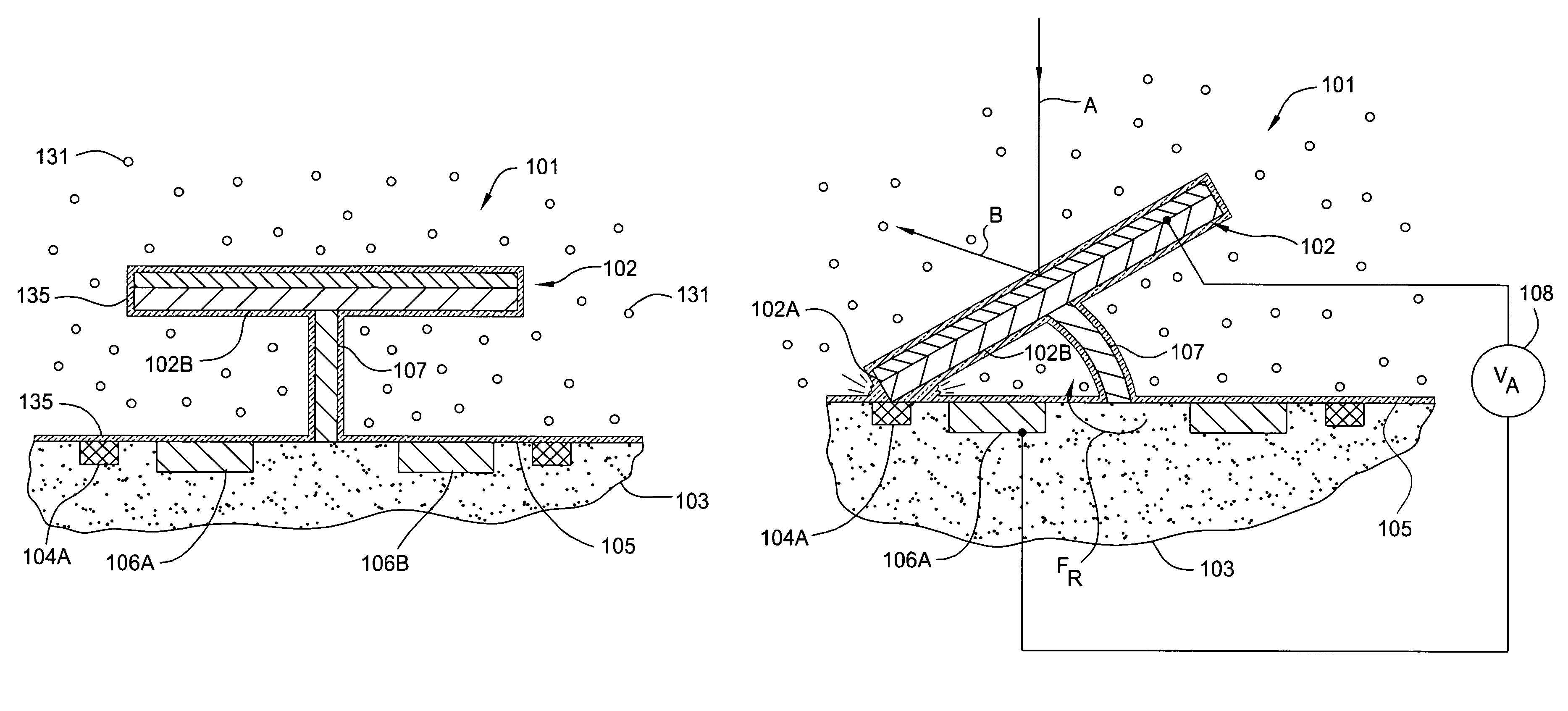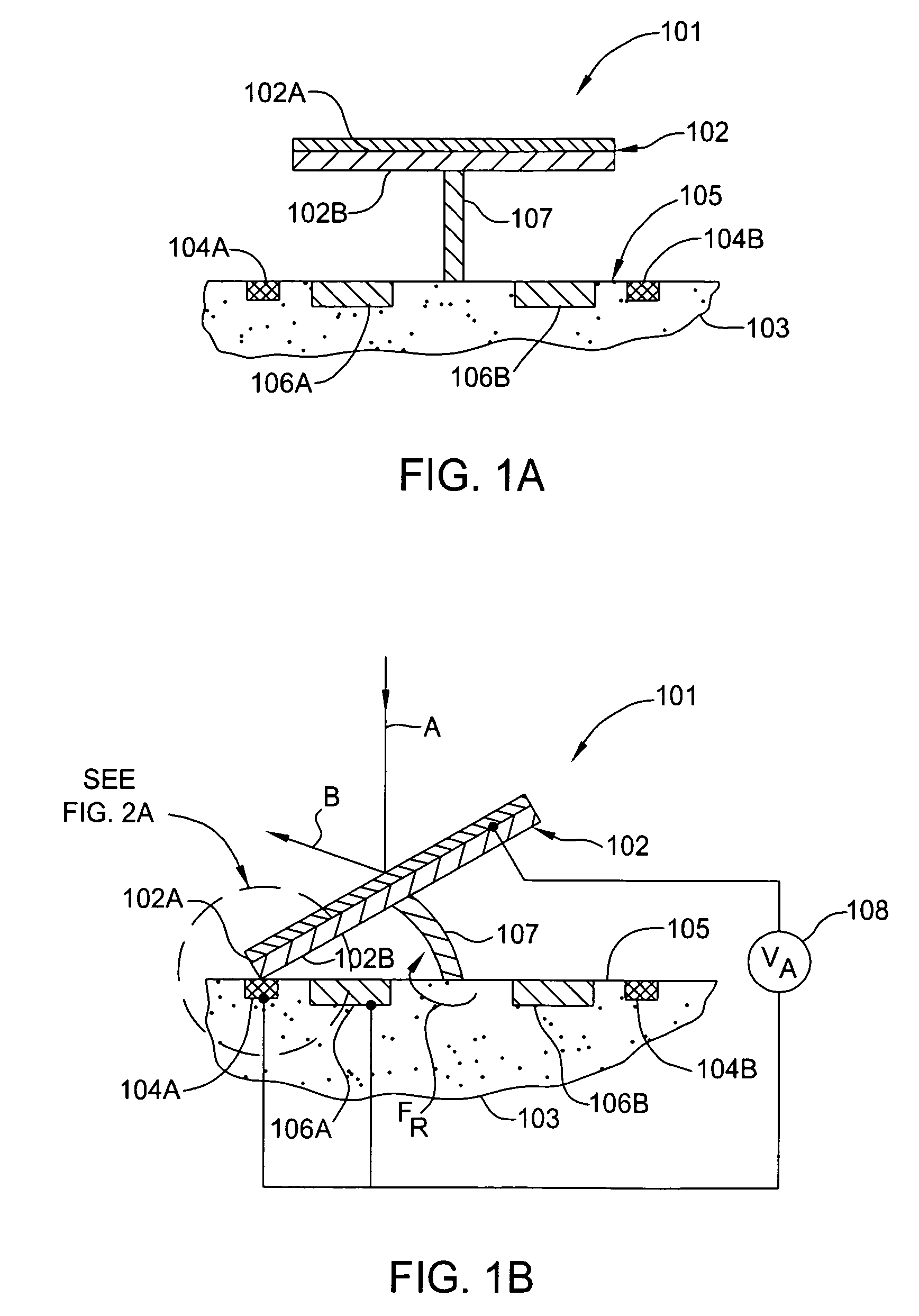Method of operating a micromechanical device that contains anti-stiction gas-phase lubricant
a technology of anti-stiction gas and micro-mechanical devices, applied in nanotechnology, instruments, nanotechnology, etc., can solve problems such as device failure or malfunction, device “stiction” force created, stiction-type failure, etc., and achieve the effect of reliably preventing stiction-related device failures and higher rates
- Summary
- Abstract
- Description
- Claims
- Application Information
AI Technical Summary
Benefits of technology
Problems solved by technology
Method used
Image
Examples
Embodiment Construction
[0049]Embodiments of the present invention generally relate to a device that has an improved usable lifetime due to the addition of a gas-phase lubricant that reduces the likelihood of stiction occurring between the various moving parts in an electromechanical device. In one example, aspects of this invention may be especially useful for fabricating and using micromechanical devices, such as MEMS devices, NEMS devices, or other similar thermal or fluidic devices. In general, a gas-phase lubricant is disposed around components of such devices that interact with one another during operation to reduce the chances of stiction-related failures. One of skill in the art will recognize that the term lubricant, as used herein, is intended to describe a material adapted to provide lubrication, anti-stiction, and / or anti-wear properties. As described in further detail herein, the term gas-phase lubricant as used herein is generally intended to describe a lubricant that is in a gaseous state at...
PUM
| Property | Measurement | Unit |
|---|---|---|
| temperatures | aaaaa | aaaaa |
| temperatures | aaaaa | aaaaa |
| temperatures | aaaaa | aaaaa |
Abstract
Description
Claims
Application Information
 Login to View More
Login to View More - R&D
- Intellectual Property
- Life Sciences
- Materials
- Tech Scout
- Unparalleled Data Quality
- Higher Quality Content
- 60% Fewer Hallucinations
Browse by: Latest US Patents, China's latest patents, Technical Efficacy Thesaurus, Application Domain, Technology Topic, Popular Technical Reports.
© 2025 PatSnap. All rights reserved.Legal|Privacy policy|Modern Slavery Act Transparency Statement|Sitemap|About US| Contact US: help@patsnap.com



